23 January 2018 by Chris Cathrine | Comments: 0
Share this article:
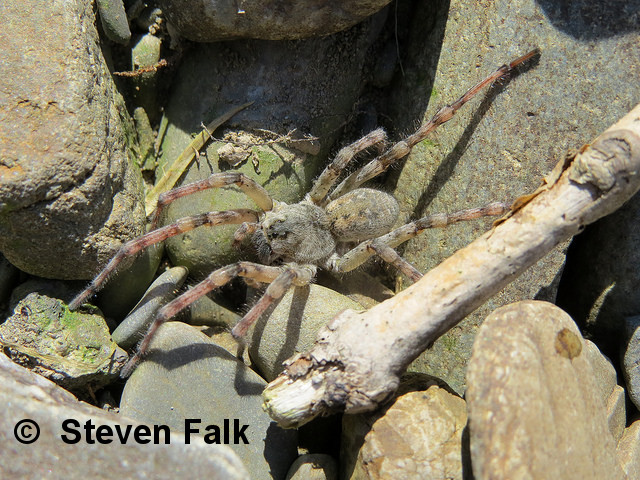
While surveying for flies and butterflies during Site Condition Monitoring at Morrich More Site of Special Scientific Interest (SSSI) in 2015, Director Chris Cathrine made a surprising discovery when a big female Northern bear sider (Arctosa cinerea) ran on to his sweep net!
This is not only the most northerly record for the Northern bear spider in the UK, but is also the first documented example of the species using sandy habitats – in this case on a stabilised dune system. Although it has been found to use this habitat for some parts of its life cycle in Europe, it is typically found under stones in shingle in the UK.
You can read more about this discovery in an article in the latest issue of the latest issue of the Newsletter of the British Arachnological Society. The article is also available to read here, via the Caledonian Conservation Ltd publications page.
The Site Condition Monitoring surveys at Morrich More SSSI were completed under contract to Scottish Natural Heritage (SNH). For more information about SNH and their work, please visit: https://www.nature.scot/
For more information about the Newsletter of the British Arachnological Society and the British Arachnological Society in general, please visit: www.britishspiders.org.uk
Photo: Arctosa cinerea © Steven Falk. For more information on Steven Falk’s work and photography, please visit: http://www.stevenfalk.co.uk/
06 December 2017 by Chris Cathrine | Comments: 0
Share this article:

Although Director Chris Cathrine published an article on the implications of Brexit for Devolved Environmental Law in Scotland just three months ago, a lot has moved on since (read the blog on the original article here). Using responses received from UK Government and Scottish Government officials, as well as newly published documents, Chris authored an update article which has been published in the latest issue of Chartered Institute of Ecology and Environmental Management (CIEEM) In Practice. This new article adds clarity to the future of environmental law in Scotland, however there remains much uncertainty, particularly as UK Government responses to queries relating specifically to devolved law made reference to policy which only applies to England. The new article can be downloaded from the Caledonian Conservation publications page.
The politics of Brexit continue at a rapid pace, and since this article was written the UK Parliament has voted on a number of amendments to the EU Withdrawal Bill (formerly known as ‘the Great Repeal Bill’) relating to both the future of environmental law and devolution. Of particular note are the votes which rejected New Clause 67 and the amendments to Clause 11, the implications of which are summarised below:
Unfortunately, these developments since writing the update article have failed to add further clarity to devolved environmental law after Brexit, and instead have increased uncertainty.
16 November 2017 by Chris Cathrine | Comments: 0
Share this article:
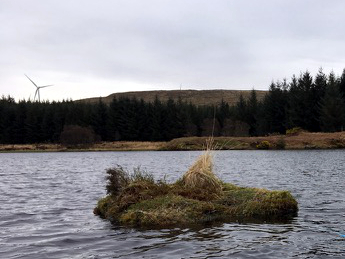
Caledonian Conservation has been working to satisfy ecology planning conditions for RES at Freasdail Wind Farm in Kintyre since 2014, involving developing and delivering mitigation for a range of birds, mammals, reptiles and habitats, as well as providing Ecological Clerk of Works (ECoW) services. The final step in this process was the deployment of nest rafts to encourage red-throated divers – rare birds protected under Schedule 1 of the Wildlife and Countryside Act 1981 (as amended in Scotland) – to breed.
Red-throated divers spend winter at sea, and return to breeding territories (usually small lochans in open moorland) in spring. The nest consists of a small scrape, normally located at the water’s edge, or on an island. As nests are often located within easy access of predators such as foxes, otters and gulls, disturbance and predation can cause breeding failure. Nests are also vulnerable to flooding during incubation – an increasingly common problem as summers become wetter as a result of climate change.
Artificial nest rafts have been found to greatly improve the success of breeding divers. These rafts are not susceptible to flooding, as they adjust automatically with the water level, and also limit access to land-based predators.
To avoid disturbance, nest rafts were installed after the major elements of construction were complete. Locations for rafts were carefully chosen to avoid risk of collision with wind turbines while red-throated divers commute between nesting lochans and feeding habitat (the sea and larger waterbodies), and to ensure there would be no human-caused disturbance during operational maintenance activities.
Working with Simon Lawrence (Lawrence Environmental Consultants), the nest rafts were successfully installed by Caledonian Conservation in April 2017, and will hopefully improve the breeding success of red-throated divers in the area in future years.
Read more about RES at: http://www.res-group.com/en
Read more about Freasdail Wind Farm at: http://www.freasdail-windfarm.co.uk/
Photo: Diver nest raft installed near Freasdail Wind Farm © Simon Lawrence
05 September 2017 by Chris Cathrine | Comments: 0
Share this article:
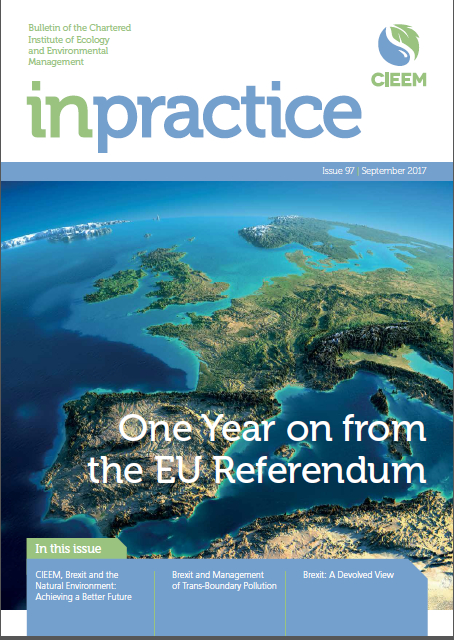
At present, environmental law is devolved in Scotland. As such the responsibility for Scottish environmental law (including wildlife protection) rests with Scottish Government. The European Union (EU) directives provide a framework for elements of environmental law, common to all UK nations and the other 27 member states. As the UK leaves the EU, these frameworks will no longer apply in Scotland, and this, combined with other implications on the devolution settlement, bring a high level of uncertainty for the future structure of environmental law. The potential implications of Brexit for devolved environmental law in Scotland was the subject of an article by Caledonian Conservation’s Director, Chris Cathrine, in the Chartered Institute of Ecology and Environmental Management (CIEEM) In Practice publication. This article is now available to download from the Caledonian Conservation publications page.
Note that the deadline for this article was before the snap 2017 General Election, and some of the areas of uncertainty are now becoming clearer – for example the background briefing notes for the Queen’s Speech indicate the intention of creating a UK-wide legislative framework for environmental law post-Brexit through the Agriculture Bill. Therefore, an update will be appropriate as further clarifications are provided.
23 August 2017 by Chris Cathrine | Comments: 0
Share this article:
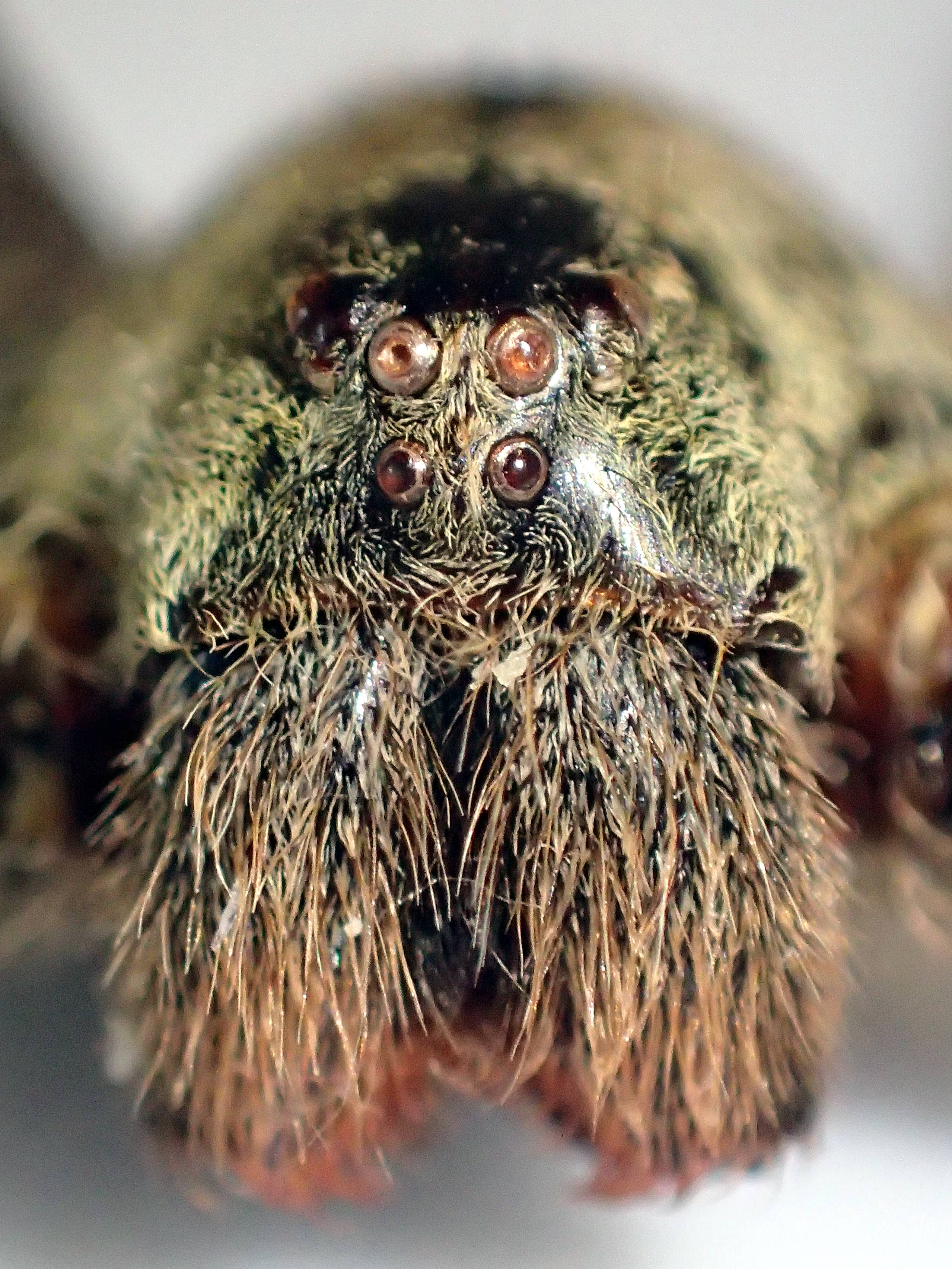
Caledonian Conservation’s Director, Chris Cathrine, co-authored an article with Stuart Longhorn for The Newsletter of the British Arachnological Society describing a specimen of Phoneutria (P. cf. boliviensis) which was found in Inverbervie (Aberdeenshire) in a banana shipment from Colombia in 2016. SRUC later sent the spider to Caledonian Conservation for identification.
The article was published on 14th August 2017, and provides information on the record, as well as photos and a diagram of the epigyne (female genitals, unique to the species of spider).
With relatively little information published on the identification of Phoneutria (known as ‘wandering spiders’ and belonging to the family Ctenidae, which does not occur naturally in the UK), there was an opportunity to share useful identification details with ecologists working throughout the world. We are proud that the article was quickly added to the World Spider Catalogue – a resource that collates key taxonomic literature on spiders, for use by academic researchers and other ecologists throughout the world.
Despite frequent media reports claiming Phoneutria spiders (sometimes erroneously referred to by the press as ‘painful erection death spiders’) to have been found in the UK and often indicating they are associated with damaging bites to people, there are no previous records published in scientific literature. These reports are rarely substantiated, and the specimens are not normally identified by expert arachnologists. Given the claims of medically important bites, Chris and Stuart felt it would be helpful to describe the effects of the venom of different Phoneutria species based on peer reviewed literature in the article.
It is hoped that this article will help inform a more robust understanding of the occurrence of Phoneutria spiders in the UK, help others identify these species, and be a useful reference source for journalists reporting on wandering spiders in the future.
The article is available to download on the Caledonian Conservation publications page and the World Spider Catalogue.
Learn more about the British Arachnological Society here.
The World Spider Catalogue is hosted by the Natural History Museum of Bern, and more information can be found here.
23 June 2017 by Chris Cathrine | Comments: 0
Share this article:
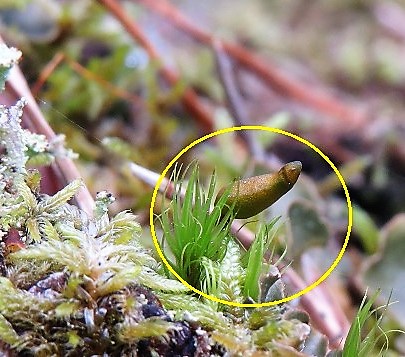
Senior ecologist and company bryologist Julie Smith reports from amongst the fallen trees of the Black Wood of Rannoch.
In January 2017 Caledonian Conservation Ltd undertook a surveillance survey across the Tay Forest District for a rare bryophyte listed under Annex II of the EU Habitats Directive which occurs on deadwood, green shield moss (Buxbaumia viridis). The aim was to survey suitable habitat to improve understanding of the distribution of the species in Scotland.
During a recent Native Woodland Discussion Group (NWDG) meeting a member had noted that there appeared to be a lack of deadwood across the Site of Special Scientific Interest (SSSI) element of Black Wood of Rannoch, one of the largest extents of ancient Caledonian Pine wood in Scotland. While our winter survey there had indeed found limited quantities there was locally frequent deadwood of good size and stage of decay along the Dall Burn and its tributaries to the east. Buxbaumia viridis was not recorded within the SSSI, but it was on neighbouring Forest Enterprise (FE) land, by the Kilvrecht campsite, again to the east.
In spite of the long term use of the Black Wood for timber extraction up until the wartime felling of the 20th century, the ancient pinewood has persisted and is now managed by Forest Enterprise (FE) under non-intervention. It is expected there will be an increase in deadwood across the SSSI in future years, which means more suitable habitat for Buxbaumia viridis. FE staff and other visitors to the woodland should be encouraged to familiarise themselves with this distinctive little moss and its preferred microhabitat, as it may very well turn up there soon!
At the end of the NWDG meeting Julie revisited the mature fallen Kilvrecht birch tree where the moss was found and became reacquainted with the impressive capsules, albeit at a different growth stage!
The photo below shows a Buxbaumia viridis capsule on mature fallen birch tree in early June 2017 (capsules have reached maturity and are golden brown in colour).
21 June 2017 by Chris Cathrine | Comments: 0
Share this article:
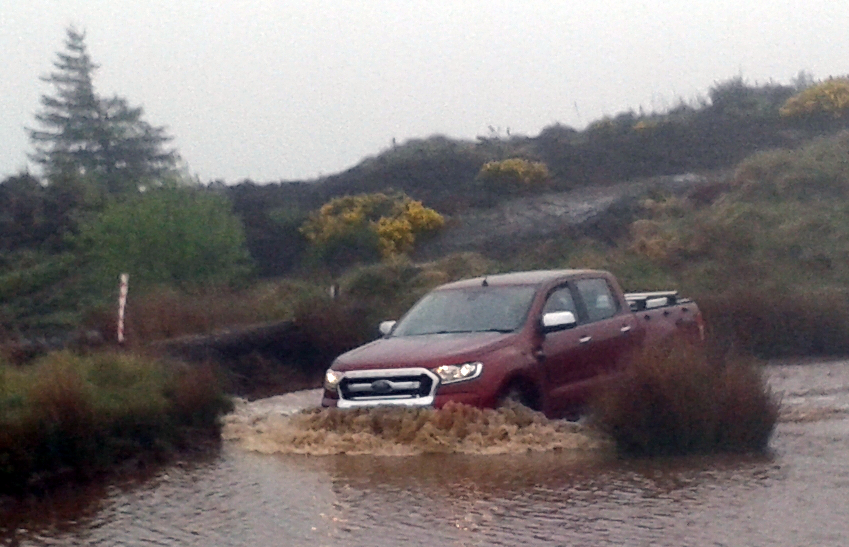
Working in remote locations throughout the UK means the Caledonian Conservation team often encounter rough and challenging terrain – particularly in Scotland! It’s therefore essential that our drivers have the equipment and the skill necessary to tackle this. The driving team are BORDA (British Off Road Driving Association) qualified, and we all recently renewed and updated our 4x4 driving skills and qualifications at the Scottish Off Road Driving Centre in Fife.
Though perhaps not quite as muddy under-tyre as in previous visits due to the recent unusually dry spell the extensive hilly (and watery) course at Glentarkie still put us through our paces as we practised our controlled ascents and descents, stall and loss of traction recoveries, braking and bow wave creation over, in and through the ditches, ridges, ruts, lakes, woods and sideslopes. There was also an opportunity for some inadvertent in-car livestock herding warming up the engine in the sheep field beforehand.
Walter and his team of instructors as ever provided an excellent programme, expertly guiding us through the obstacles of the day and also offering a lot of useful advice on a range of issues from safety checks to be carried out before every excursion through to proper usage of the handbrake when parking.
This also gave us an opportunity to really test the Ford Ranger’s capabilities – learning the limitations and unexpected strengths compared to Land Rover Defenders. Rangers are remarkably capable off road vehicles – we were particularly surprised at how well they out-performed Defenders when cross axled! We’d certainly recommend the Ford Ranger Off Road Pack!
We all emerged unscathed and fully prepared once again for whatever terrain our various projects might take us to next in the wilds of Scotland and beyond.
No Ford Rangers were harmed during the earning of our new BORDA certificates.
To find out more about the British Off Road Driving Association (BORDA) visit: www.borda.org.uk/
To find out more about the Scottish Off Road Driving Centre visit: www.scotoffroad.co.uk/
To find out more about Ford Rangers visit: www.ford.co.uk
19 June 2017 by Chris Cathrine | Comments: 0
Share this article:

The Caledonian Conservation team will be out in force at the 29th annual Game and Wildlife Conservation Trust (GWCT) Scottish Game Fair from 30 June to 2 July.
We will be hosting a stand at this prestigious country show, billed as ‘Scotland’s most popular outdoor event’, which is held within the parklands of the historic and scenic Scone Palace in Perthshire.
Our stand will be manned over the three days by Chris Cathrine, Director; Liz Coiffait and Julie Smith, Senior Ecologists; Carolyn Gillen and Steven Johnston, Ecologists and Joanne O’Hara, Administrator who look forward to meeting past, present and future clients.
By attending the fair we look forward to establishing new relationships with those that are responsible for the management of estates and other land in Scotland, who may need professional ecology advice, as well as developers, surveyors, wildlife societies and others that have countryside affiliations. With members of the team specialising in everything from wildlife and habitat surveys to Ecological Impact Assessments and Habitat Management Plans there will be plenty of expert advice on hand for visitors to our stand.
If you’re at the fair be sure to come and see us at stand S22a on Stag Row. See you there!
For more information on the Scottish Game Fair, visit: www.scottishfair.com
For more information about GWCT, visit: www.gwct.org.uk
11 April 2017 by Chris Cathrine | Comments: 0
Share this article:
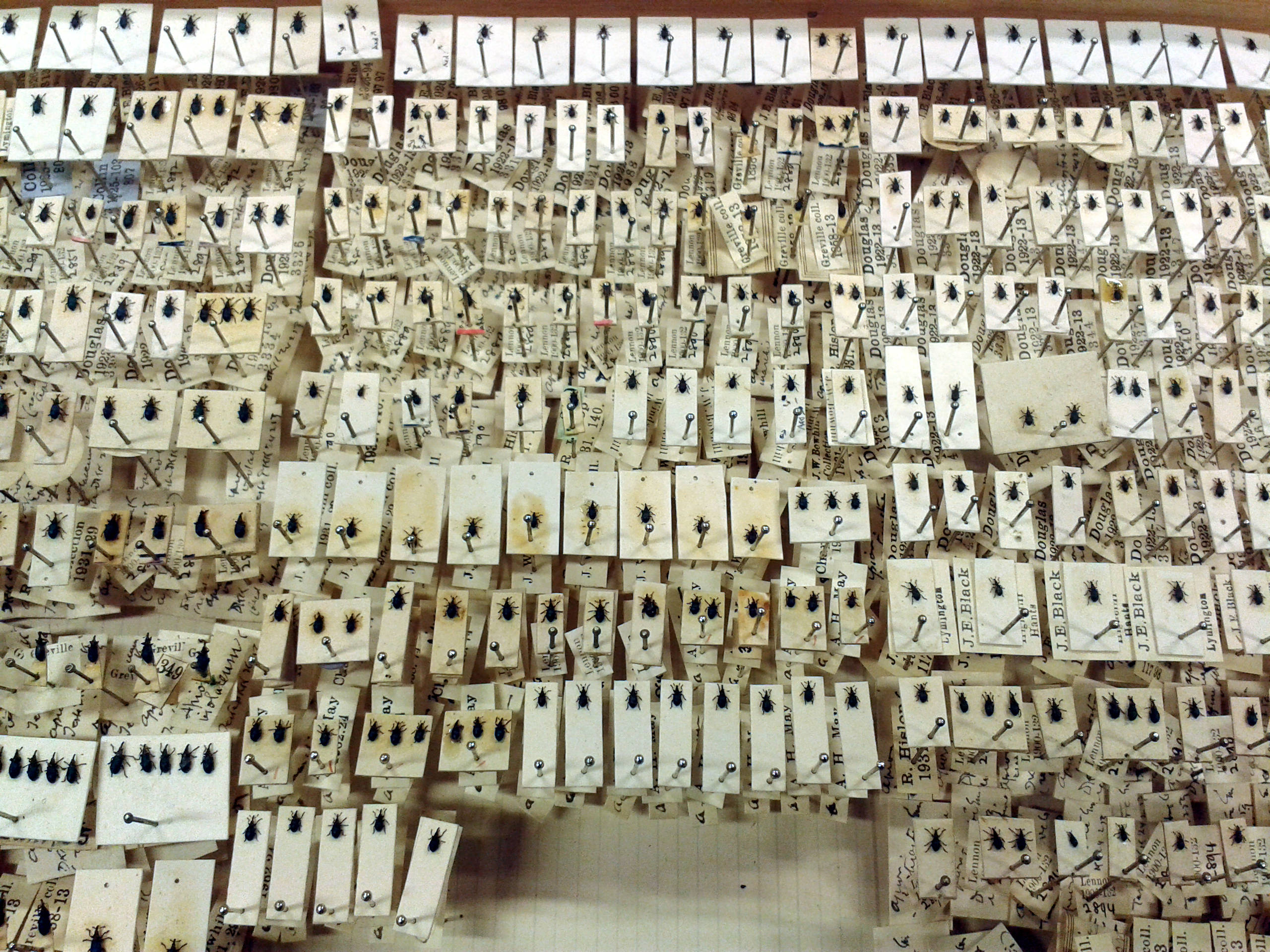
In September 2016, Director Chris Cathrine carried out invertebrate surveys at Scottish Wildlife Trust’s (SWT) Balgavies Loch reserve using Caledonian Conservation’s bugvac (a modified leaf blower that sucks bugs into a net). Bugvac is excellent at turning up invertebrates such as spiders and beetles hiding deep within vegetation that would be difficult to collect or missed entirely using traditional collection methods. Recently we identified the species collected, however some of these invertebrates can be very difficult to differentiate from one another, even using the microscopes, identification keys and reference collections we have in the office.
Luckily the National Museum of Scotland Collection Centre in Edinburgh allows access to their collections for reference and research, giving us the opportunity to compare anatomical features of our samples against curated specimens in the collection. In Britain there are around 4,000 known beetle species and, just like people, individuals of each species are unique, coming in a natural range of shapes, colours and sizes. Around a quarter of all beetles are members of the Staphylinidae family (rove beetles), many of which show only very minute physicals differences from one another. A good reference collection with a number of specimens of the same species collected from different geographical locations can prove very useful in aiding identification.
Despite the difficulty of identifying some species, the information gained can be very useful for making informed decisions about changes to land management. Since many invertebrate species require very specific microhabitats or host plants, they are often excellent indicators of habitat quality and change. The conservation status and habitat preferences of the species identified in different parts of Balgavies Loch reserve will help SWT plan how the site can be best managed for a wide range of wildlife in the future.
Check out National Museum of Scotland’s website for more information about their excellent resources.
The SWT Balgavies Loch invertebrate report is also available to read via the Caledonian Conservation Ltd website, here.
Visit SWT's website to learn more about Balgavies Loch and their other reserves.
17 February 2017 by Chris Cathrine | Comments: 0
Share this article:
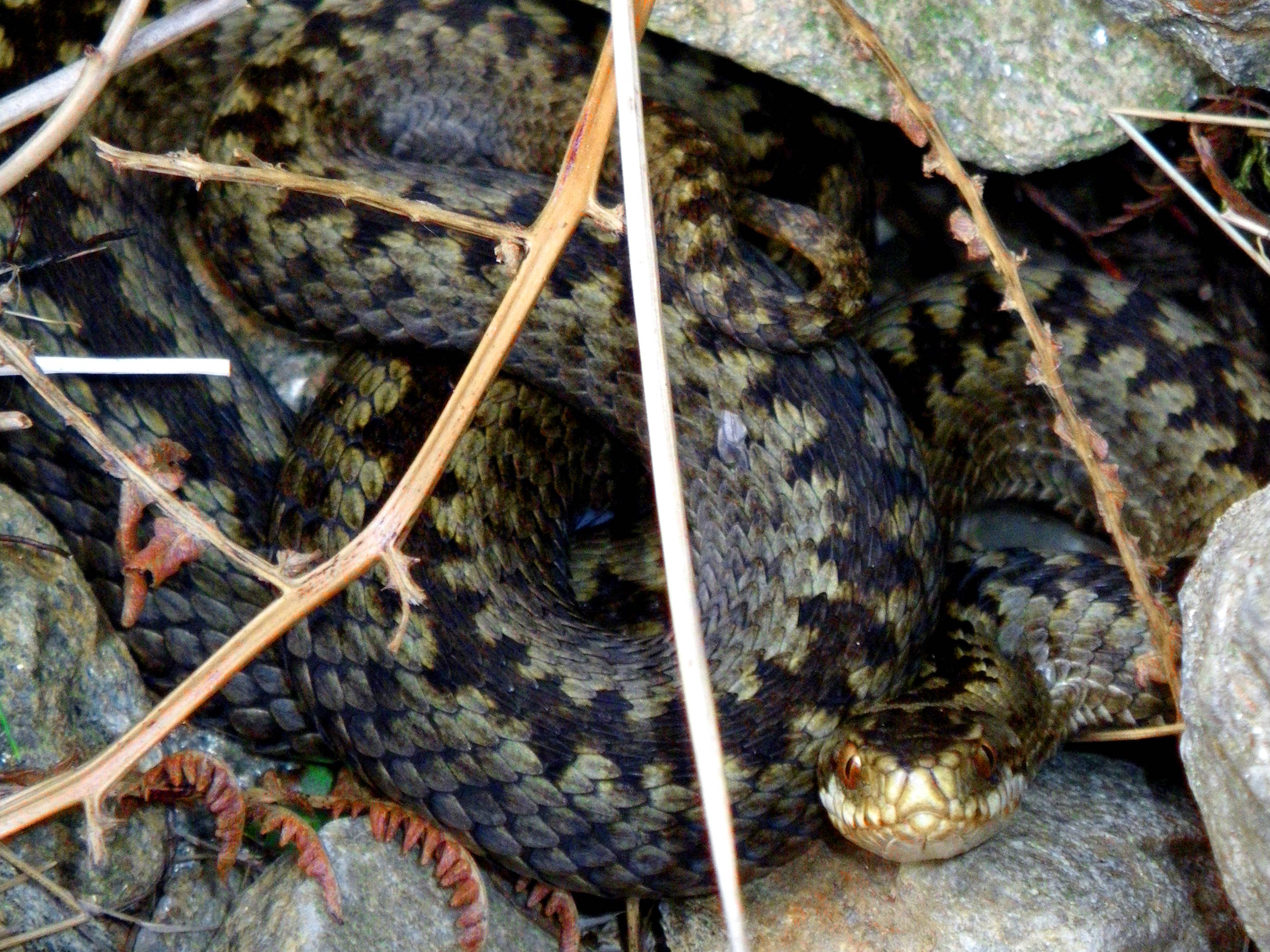
Chris Cathrine has taken on a volunteer role with Amphibian and Reptile Groups of the UK (ARG UK), as Scottish Policy Adviser. Having stepped down as Scottish Representative in 2014 before the arrival of his first son, he has remained involved with the conservation of reptiles and amphibians – which, along with spiders and beetles first engaged him with the natural world as a child. With the future of UK environmental protection currently uncertain, he felt it was necessary to dedicate more time to supporting ARG UK in their efforts to influence future policy for the benefit of Scotland’s native reptiles and amphibians. This role offers the perfect opportunity for this.
Chris brings his experience gained through writing great crested newt and reptile survey and mitigation guidelines, researching Scottish grass snake distribution and over ten years as a professional ecologist (in consultancy, conservation charities and local authority), as well as almost three decades of surveying for these wonderful but often overlooked animals.
We feel it is essential that Caledonian Conservation Ltd gives back to communities as part of its Corporate Social Responsibility. As such, we support conservation charities (through financial donation, in-kind contributions and expertise), conduct in-house research, support other research (through financial donation and provision of resources), provide training, deliver public talks to raise awareness of wildlife, run events for children to share our enthusiasm for the natural world and make as much of our publications and data available publicly (via our publications page and NBN Gateway).
For more information about ARG-UK, visit: www.arguk.org